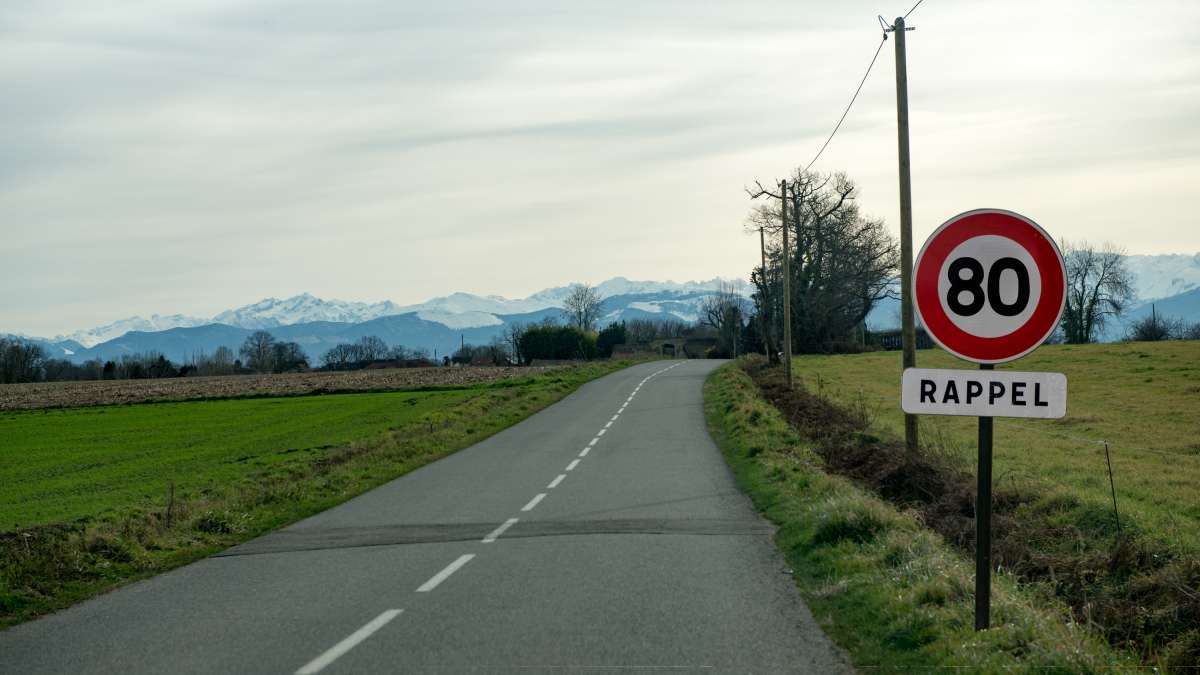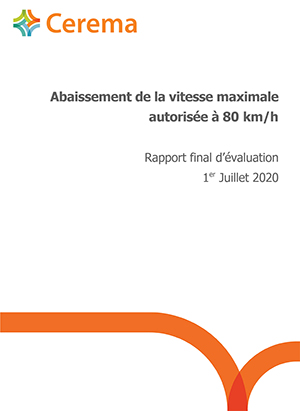
This document constitutes the final assessment report of July 2020.
The general principles of the method deployed
The assessment method was deployed in four areas: speeds practised, accident rate, acceptability and societal effects. A socio-economic calculation was also made. Based on a scientific approach, this method was submitted for review by national and international experts.
The method is based on the principle of assessment “before” and “after” implementation of the measure on the relevant roads. The remainder of the French road network was taken as a control group, in order to take account of context-related effects.
The Covid-19 pandemic caused severe disruption to travel movements in France in the first half of 2020, in terms of both volume and structure. At the beginning of the year it prevented certain data from being collected. Due to this context the overall assessment was carried out over the 18 months following implementation of the measure, from July 2018 to December 2019.
Results of the assessment
 Reduction in speeds practised starting from 1st July 2018
Reduction in speeds practised starting from 1st July 2018
The lowering of the maximum authorised speed has a non linear influence on the speeds practised. Accordingly, in relation to the 80 km/h measure a drop of 3.3 km/h in average speeds practised by all users was measured by Cerema’s dedicated observatory (based on 143 million vehicle detections). This drop is in line with the results reported in international literature.
On 1st July 2018 there was a real impact on speeds practised on the roads concerned by the measure. The drop in speeds continued over the entire period up until December 2019. It concerns all speeds, including the highest. The difference between the slowest speeds and highest speeds remains stable.
A very significant reduction in the number of people killed on the relevant roads
The impact of the measure corresponds to a 12% drop in the number of people killed on the relevant road network which does not include motorways and conurbations, compared to the remainder of the French road network (with an estimated error rate of 3.6%).
Therefore for the 18 months following implementation of the measure, for which the BAAC data are definitive and validated by the French public statistics authority, a reduction of 331 people killed is observed on the relevant network, compared to the reference period, 2013 to 2017. Taking account of the months of January and February 2020, for which the data are estimated, the reduction in the number of people killed totals 349 over a period of 20 months.
On the remainder of the French road network there is a different trend, with a stagnation in the number of people killed compared to the reference level.
The impact of the measure is more moderate on the number of accidents causing bodily injury or death. On the relevant network, the number stabilised at the baseline level. However the reduction in severity of accidents should be noted, with a 10% reduction in the mortality rate.
Lengthening of journey times, less than perceived by users
In terms of circulation, the Cerema observatory did not detect that the measure had any impact on traffic flows. No additional grouping of vehicles was observed, and there was no reduction in the time between vehicles following each other.
However an increase in average journey times of 1 second per kilometre was calculated, by comparative analysis with historic vehicle data for sliding three month periods in 2017 and 2019.
For 50 kilometre journeys this corresponds to a loss of 50 seconds on weekdays. This is much less than the lost time as perceived by users, who tend to overestimate the time gained when they drive faster. When surveys were carried out in October 2019, respondents stated that they had lost more than 2 minutes on this type of journey.
A slight improvement in environmental impacts
Concerning environmental effects, the analyses showed that the measure led to a slight decrease in the main atmospheric pollutants and noise nuisance, although the latter reduction is not perceptible to the human ear. Although the results obtained are modest, they correspond to prior literature on this subject.
Continuous improvement in the acceptability of the measure
Several survey campaigns carried out by an opinion poll institute on broad samples representative of the French population show that the acceptability of the measure has increased continuously since it was introduced. The proportion of people favourable to the measure increased from 30% in April 2018 to 43% in October 2019 and 48% in June 2020.
The positive trend was strongest amongst people “completely against” the measure, where the proportion fell from 40% in April 2018 to 23% in October 2019 and 20% in June 2020. The trend is particularly clear for people living in rural areas and in towns with a population of less than 20,000.
The surveys, in line with the preceding literature, have shown that the reduction in the accident rate and in particular mortality has a positive impact on the level of agreement with the measure.
A positive socio-economic result demonstrating the effectiveness of the measure
The socio-economic calculation estimates a gain of 700 million euros over one year, comparing 2017 and 2019. It was performed in the context of the reference for assessment of transport projects produced by the DGITM in 2014.
The socio-economic result highlights clear effectiveness of the measure, which represents a low investment cost as well as positive results when the societal benefits are compared to the societal costs. The societal benefits mainly lie in the improvement in the accident rate (€1.2 billion ). They correspond to the expected impact of the measure. The main social cost of the measure is the journey time lost (between €720 million and €920 million). It is more than compensated by the reduction in the accident rate, to which are added the benefits due to lower fuel consumption and the drop in CO2 emissions.
Finally, these positive results would be even better if there were greater compliance with the speed limits
The measure has not yet fully achieved its expected results. In December 2019, 58% of light vehicle drivers were still travelling at speeds above 80 km/h, including 35% at between 80 and 90 km/h. The literature tells us that these speeds exceeding the limit by less than 10 km/h are perceived by users as not being very dangerous or reprehensible. However in fact they play an important role in the mortality on French roads.
Progress therefore remains to be made in compliance with speed limits. The steady increase in acceptance of the measure gives reason to hope that compliance will also improve.

